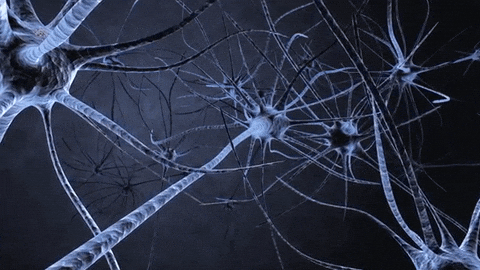
What is ADHD?
ADHD, or Attention Deficit Hyperactivity Disorder, is defined by persistent patterns of inattention and/or hyperactivity-impulsivity that interfere with daily functioning and development. This disorder affects both children and adults and is diagnosed based on behavioural criteria outlined in the Diagnostic and Statistical Manual of Mental Disorders. ADHD does not always include hyperactivity, which can lead to misunderstandings about its presentation.
The global prevalence of ADHD in children is estimated to be around 5%. In the UK, the prevalence of ADHD in adults is estimated at 3% to 4%. It is more commonly diagnosed in boys than girls.
ADHD diagnosis is based on a range of behavior that must persist for at least six months and be inappropriate for the individual’s developmental level. For children under 16, six or more symptoms of either inattention or hyperactivity-impulsivity are required. Adolescents and adults (age 17 and older) need five or more symptoms in either category. Symptoms must appear before age 12, present in more than one setting (such as home, school, or work), and clearly impair social, educational, or occupational functioning.
Inattention symptoms include difficulties in sustaining attention, following through with instructions, organizing tasks, and often losing essential items. People with ADHD are frequently easily distracted and forgetful in daily activities.
Hyperactive-impulsive symptoms include physical restlessness, such as fidgeting or squirming, and impulsive actions, like interrupting conversations or intruding on others' activities without considering consequences.
ADHD has three primary presentations:
1. Combined presentation, in which both inattentive and hyperactive-impulsive symptoms are present and is the most common type.
2. Predominantly inattentive presentation, where inattention is the primary issue, with few hyperactivity-impulsivity symptoms.
3. Predominantly hyperactive-impulsive presentation, in which hyperactivity-impulsivity is the main challenge.
ADHD, predominantly inattentive presentation (ADHD-PI)
Also known as what used to be called ADD.
Symptoms include:
-
Trouble staying focused or paying attention
-
Easily distracted
-
Forgetfulness
-
Frequently losing things
-
Doesn’t seem to listen when spoken to
-
Avoids tasks that require a lot of mental effort
-
Difficulty organizing tasks and activities
This type is often less noticeable and can go undiagnosed, especially in girls.
ADHD, predominantly hyperactive-impulsive presentation (ADHD-PH)
This one is more common in younger kids and tends to be more obvious.
Symptoms include:
-
Fidgeting or squirming
-
Difficulty staying seated
-
Excessive talking
-
Interrupting others
-
Blurting out answers
-
Acting as if “driven by a motor”
People with this type are often seen as very energetic or impulsive.
ADHD, combined presentation (ADHD-C)
This is the most common type.
It includes a mix of inattentive and hyperactive-impulsive symptoms. To be diagnosed with this type, someone needs to meet the criteria for both categories, with symptoms lasting at least six months.
Let me know if you want to go into symptoms, diagnosis, treatments, or anything else.
Newer research highlights the role of specific genes and environmental factors in ADHD. Studies suggest that certain genetic variants related to dopamine and serotonin regulation may increase susceptibility to ADHD.
Environmental factors, such as exposure to toxins during pregnancy, early childhood stress, and certain dietary habits, are also associated with higher risks.
Advanced neuroimaging techniques, such as functional MRI and PET scans, have provided insights into the neurological mechanisms of ADHD. These studies show differences in brain structures related to emotional regulation, motivation, and executive function. For example, the prefrontal cortex, responsible for planning and impulse control, is often less active or develops more slowly in people with ADHD.
Connections between the prefrontal cortex and other brain regions, including the basal ganglia and cerebellum, are also often weaker, leading to challenges in sustaining attention and regulating behavior.
Recent findings emphasize the impact of ADHD on emotional regulation. Studies now recognize emotional dysregulation as a key component of ADHD, affecting social interactions, mental health, and quality of life. Emotional dysregulation often manifests as frustration, difficulty handling criticism, and sudden mood shifts, which can intensify other ADHD symptoms.
Research on treatment options shows that combining medication with behavioural therapy can be particularly effective in managing ADHD. Medications like stimulants (such as methylphenidate and amphetamines) help increase dopamine and norepinephrine levels, which improve focus and impulse control. New studies also suggest that mindfulness-based practices, cognitive behavioural therapy, and physical exercise contribute positively to neuroplasticity, allowing the brain to form new pathways and improve executive function.
References:
1. Hallowell, E., & Ratey, J. (2021). *ADHD 2.0: New science and essential strategies for thriving with distraction—from childhood through adulthood*. New York, NY: Ballantine Books.
2. Hoekzema, E., Carmona, S., Ramos-Quiroga, J. A., Barba, E., Bielsa, A., Tremols, V., Rovira, M., Soliva, J. C., Casas, M., Bulbena, A., Tobeña, A., & Vilarroya, O. (2011). Training-induced neuroanatomical plasticity in ADHD: A tensor-based morphometric study. *Human Brain Mapping*, 32(10), 1741-1749.
3. Napoli, N. (2024, March 27). ADHD stimulants may increase risk of heart damage in young adults: While likelihood of cardiomyopathy grows over time, the overall risk remains low. *American College of Cardiology*. [https://www.acc.org](https://www.acc.org)
4. Pappas, M. A., & Drigas, A. S. (2019). Computerized training for neuroplasticity and cognitive improvement. *International Journal of Engineering Pedagogy (iJEP)*, 9(4), 50-62. [https://doi.org/10.3991/ijep.v9i4.10285](https://doi.org/10.3991/ijep.v9i4.10285)
5. Rapoport, J., & Gogtay, N. (2008). Brain neuroplasticity in healthy, hyperactive, and psychotic children: Insights from neuroimaging. *Neuropsychopharmacology*, 33, 181–197.
6. Rubia, K. (2018). Cognitive neuroscience of attention deficit hyperactivity disorder (ADHD) and its clinical translation. *Frontiers in Human Neuroscience*, 12, 100.
.[https://doi.org/10.3389/fnhum.2018.00100](https://doi.org/10.3389/fnhum.2018.00100)
7. King's College London (2023). Neurobiology Animation [YouTube video], available at: https://youtu.be/4r3XWj269_g (Accessed: 14 November 2024).
8. King's College London (2023). Neurotherapies for ADHD [YouTube video], available at: https://youtu.be/5BElTJ1IPPo (Accessed: 14 November 2024).